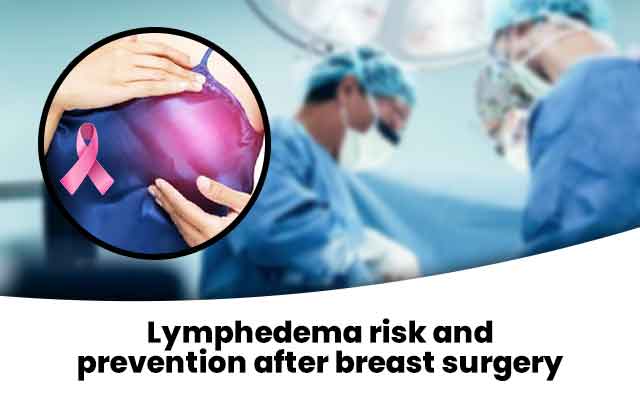Lymphedema is a common potential complication following breast cancer surgery in Kolkata that involves lymph node removal. This chronic condition causes fluid build-up and swelling in the arm, hand or chest on the affected side. While not completely curable, lymphedema can be managed with early diagnosis and diligent care.
Causes:
Lymphedema arises when lymph nodes are damaged, removed or irradiated during breast cancer treatment. Lymph nodes normally drain fluid from tissues, but disruption of this system allows fluid backup. Risk is highest with extensive lymph node dissection or radiation after mastectomy. Even a sentinel node biopsy poses some risk.
Symptoms:
Swelling in the arm, hand, chest or trunk on the surgery side indicates lymphedema onset. Other signs include aching, heaviness, numbness, tightness and decreased flexibility in the limb. Symptoms may arise shortly after surgery or years later. Flare-ups can also occur.
Risk Factors
The more lymph nodes affected, the greater the lymphedema risk. Younger age, being overweight, and a trauma like infection or injury to the arm after surgery for breast cancer also increase chances. Air travel can trigger flare-ups due to pressure changes. Genetic predisposition may also play a role.
Prevention
There is no way to guarantee prevention, but measures can reduce risk. Avoiding injury, infections, and blood draws in the at-risk limb is key. Light, regular exercise helps circulation and limb mobility. Compression sleeves during air travel can also help.
Early Diagnosis
Catching lymphedema early allows for prompt treatment before severe swelling and fibrosis occur. Monitoring for subtle symptoms and seeing a doctor at the first sign of changes is imperative. Therapists can assess limb measurements and circulation.
Treatment
#1 Combined Decongestive Therapy
Combined decongestive therapy from a certified lymphedema therapist is the standard treatment. This uses massage, compression bandages, exercise and skincare to direct fluid through healthy lymph vessels and reduce swelling.
#2 Compression Garments
Custom-fitted compression sleeves, stockings, or wraps worn daily help reduce fluid backup and maintain limb size. Good skin care avoids infection that could exacerbate swelling.
#3 Low-Level Laser Therapy
Low-level laser treatments can help shrink excess lymphatic fluid and fibrous tissue. Multimodal therapy combining laser and compression shows excellent results.
While lymphedema remains a lifelong risk, awareness and prompt care can control symptoms and prevent progression. Awareness of personal risk factors as well as lymphedema signs allows breast cancer survivors to seek help early for the best prognosis. So, you need to take this factor into account when you undergo breast cancer surgery in Kolkata.

